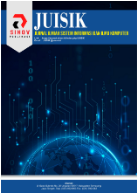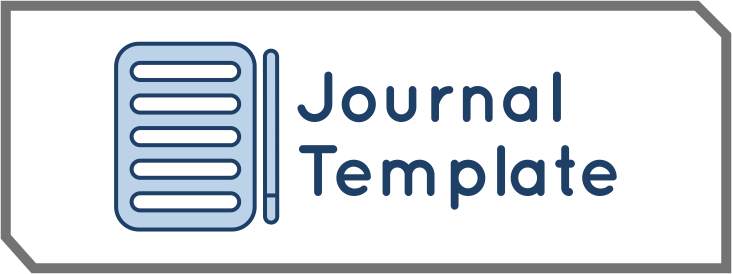Rancang Bangun Sistem Informasi Perpustakaan SMA/SMK Menggunakan Metode Extreme Programming
DOI:
https://doi.org/10.55606/juisik.v5i3.1697Keywords:
Black Box Testing, Extreme Programming, Information System, School Library, System TestingAbstract
Developing a Library Information System can enhance the efficiency of library data management. The background of this research stems from the fact that many school libraries still encounter various challenges in their operational activities. For instance, SMK Negeri 6 Kota Jambi still implements a manual management system. Meanwhile, SMA Negeri 2 Kota Jambi utilizes SLIMS, which has been found to be difficult to understand and not user-friendly for library administrators. As a result, the administrators decided to revert to manual record-keeping using library logbooks. Similarly, SMA Negeri 3 Kota Jambi employs INLISLITE; however, its book borrowing and returning features are not functioning properly, and the system frequently experiences technical issues. To address these problems, this study proposes the development of a Library Information System using the Extreme Programming (XP) methodology. Extreme Programming is a software development method known for its adaptability to changing user requirements and its ability to support rapid and flexible system development processes. The purpose of this research is to implement a library information system capable of efficiently managing data, book borrowing and returning processes, as well as searching for book and room information. Additionally, the system provides a platform for library members to publish content. To ensure that the developed system meets the intended expectations, Black Box Testing is applied as the testing method. Based on the testing results, the system functions properly, as indicated by a 100% success rate in Black Box Testing outcomes.
References
Aini, Q., Rukmana, E. N., & Rohman, A. S. (2022). Penerapan aplikasi Senayan Library Management System (SLIMS) dalam pengelolaan bahan pustaka di perpustakaan sekolah. Bibliotika: Jurnal Kajian Perpustakaan dan Informasi, 6. http://journal2.um.ac.id/index.php/bibliotika%0APenerapan
Badrul, M. (2021). Penerapan metode waterfall untuk perancangan sistem informasi inventory pada Toko Keramik Bintang Terang. Prosisko: Jurnal Pengembangan Riset dan Observasi Sistem Komputer, 8(2), 57–62. https://doi.org/10.30656/prosisko.v8i2.3852
Gandaputra Simbolon, A. N., Fahmi, I., & Syafitri, U. D. (2024). Strategi pengembangan Yayasan Seri Amal pasca pandemi Covid-19. Cetta: Jurnal Ilmu Pendidikan, 7(1), 204–210. https://doi.org/10.37329/cetta.v7i1.2932
Guterres, J. J. (2020). Sistem informasi perpustakaan berbasis web di Sekolah Menengah Pertama Swasta Santa Theresia 1 Tuapukan Kupang Timur. Jurnal Pendidikan Teknologi Informasi (JUKANTI), 3(2), 33–38. https://doi.org/10.37792/jukanti.v3i2.223
Kartono, F. K., Nursaadah, S., Nugroho, M. R., Tama, D. A., Mashudi, F. A., Wicaksono, A., & Nasir, M. (2024). Pengujian black box testing pada sistem website Osha Snack: Pendekatan teknik boundary value analysis. Jurnal Kr idatama Sains dan Teknologi, 6(2), 754–766. https://doi.org/10.53863/kst.v6i02.1407
Maikel Bolung, H. R. K. T. (2017). Analisa penggunaan metodologi pengembangan perangkat lunak. Eltikom, 1(1), 1–10. https://doi.org/10.1007/978-981-15-7530-3_9
Ningsih, W., & Nurfauziah, H. (2023). Perbandingan model waterfall dan metode prototype. Jurnal Ilmiah Metadata, 5(1), 83–95.
Novalia, E., & Voutama, A. (2022). Black box testing dengan teknik equivalence partitions pada aplikasi Android M-Magazine Mading Sekolah. Syntax: Jurnal Informatika, 11(1), 23–35. https://doi.org/10.35706/syji.v11i01.6413
Prabandanizwaransa, I. P., Ahmad, I., & Susanto, E. R. (2023). Implementasi metode extreme programming untuk sistem pengajuan tempat PKL berbasis web. Jurnal Informatika dan Rekayasa Perangkat Lunak, 4(2), 221–227. https://doi.org/10.33365/jatika.v4i2.2601
Pricillia Titania, & Zulfachmi. (2021). Perbandingan metode pengembangan (waterfall, prototype, RAD). Bangkit Indonesia, 10(1), 6–12.
Rahmi, A. (2022). Efektivitas penerapan sistem aplikasi INLISLite (Integrated Library System) pada kegiatan penginputan data Dinas Perpustakaan dan Kearsipan Kabupaten Aceh Barat. Jurnal Sistem dan Pengelolaan, 4(2), 128–141. https://jurnal.amikom.ac.id/index.php/jspg/article/download/931/335/4603
Ramadhan, M., & Gustalika, A. (2024). Rancang bangun aplikasi pemesanan tiket tempat wisata berbasis Android menggunakan metode extreme programming. Bulletin of Information Technology (BIT), 5(2), 114–124. https://doi.org/10.47065/bit.v5i2.1341
Sri Endarti. (2022). Perpustakaan sebagai tempat rekreasi informasi. Abdi Pustaka: Jurnal Perpustakaan dan Kearsipan, 21(1), 23–28. https://journal.isi.ac.id/index.php/JAP/article/view/6990/0
Wahyuni, E. D., Ramadha, F. N., Saputra, T. T., & Maulana, A. H. (2024). Perbandingan perancangan sistem informasi akademik menggunakan metode extreme programming dan incremental. JITET (Jurnal Informatika dan Teknik Elektro Terapan), 12(3), 1945–1951.
Yudhistira, J. (2024). Perancangan sistem informasi ujian online menggunakan metode extreme programming. Journal of Artificial Intelligence and Technology Information, 2(2), 87–95.* https://ejournal.techcart-press.com/index.php/jaiti/article/view/122
Downloads
Published
How to Cite
Issue
Section
License
Copyright (c) 2025 Jurnal ilmiah Sistem Informasi dan Ilmu Komputer

This work is licensed under a Creative Commons Attribution-ShareAlike 4.0 International License.













